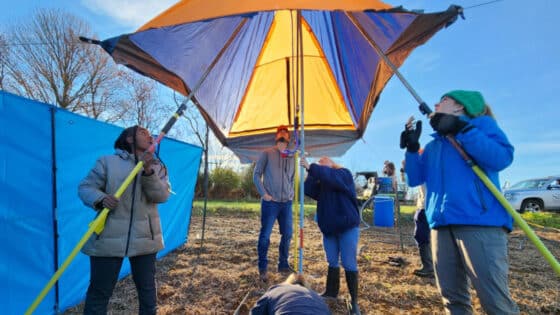Newbold, J.D., P.J. Mulholland, J.W. Elwood, and R.V. O’Neill. 1982. Oikos 38(3):266–272.
Abstract
The term spiralling has been used to describe the combined processes of cycling and longitudinal transport in streams. As a measure of organic carbon spiralling, we introduce organic carbon turnover length, S, defined as the average or expected downstream distance travelled by a carbon atom between its entry or fixation in the stream and its oxidation. Using a simple model for organic carbon dynamics in a stream, we show that S is closely related to Fisher and Likens’ ecosystem efficiency. Unlike efficiency, however, S is independent of the length of the study reach, and values of S determined in streams of differing lengths can be compared. Using data from three different streams, we found the relationship between S and efficiency to agree closely with the model prediction. Hypotheses of stream functioning are discussed in the context of organic carbon spiralling theory.


